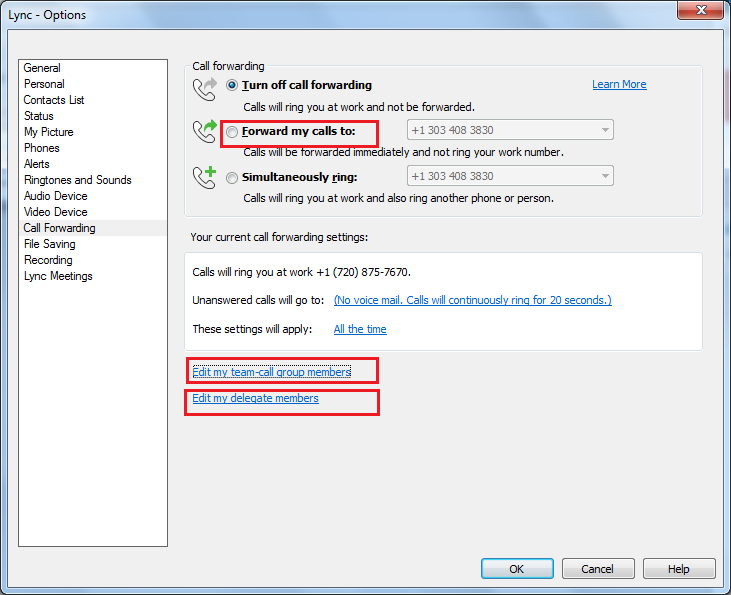

- #SKYPE FOR BUSINESS GROUP CALL FORWARDING FOR MAC#
- #SKYPE FOR BUSINESS GROUP CALL FORWARDING SOFTWARE#
- #SKYPE FOR BUSINESS GROUP CALL FORWARDING WINDOWS#
Lync and Skype for Business implement these features as follows:
#SKYPE FOR BUSINESS GROUP CALL FORWARDING SOFTWARE#
The main new features of this version are the addition of real-time multi-client collaborative software capabilities, (which allow teams of people to see and simultaneously work on the same documents and communications session).
#SKYPE FOR BUSINESS GROUP CALL FORWARDING WINDOWS#
However, only the native Windows OS client and no other platform supports this feature at this time. Note: With the release of Lync Server 2013 in October 2012, a new collaboration feature "Persistent Group Chat" which allows multi-party chat with preservation of content between chat sessions was introduced. Offers support for TLS and SRTP to encrypt and secure signaling and media traffic.Uses SIP as the basis for its client communication protocol.A number of client types are available for Microsoft Skype for Business, including mobile clients.

The server can be set to relay messages to other instant messaging networks, avoiding installation of extra software at the client side. This makes communications more secure, as messages do not need to leave the corporate intranet, unlike with the Internet-based Windows Live Messenger.
#SKYPE FOR BUSINESS GROUP CALL FORWARDING FOR MAC#
On October 27, 2016, the Skype for Business for Mac client was released. On September 22, 2015, Skype for Business 2016 was released alongside Office 2016. On November 11, 2014, Microsoft announced that Lync would be renamed Skype for Business in 2015, also adding support for video calls with Skype users. This initially included support for text and voice communications. In May 2013, Microsoft announced that it would allow Lync users to communicate with Skype, a consumer IM platform it had acquired in 2011. In November 2010, the platform was renamed Lync. Microsoft released the successor to Office Communicator, Lync 2010, on January 25, 2011. It was followed by Office Communicator 2007 R2, released on March 19, 2009. Microsoft released Office Communicator 2007 to production on Jand launched it on October 27, 2007. Support for Skype for Business Online ended in July 2021, and Skype for Business Server 2019 will receive extended support through October 14, 2025. In September 2017, Microsoft announced that it would phase out Skype for Business in favor of Microsoft Teams, a new cloud-based collaboration platform. In 2015, the software was rebranded from Lync to Skype for Business, co-branding it with the Microsoft-owned consumer messaging platform Skype (which had begun to integrate with Lync in 2013). It supports text, audio, and video chat, and integrates with Microsoft Office components such as Exchange and SharePoint. It is designed for use with the on-premises Skype for Business Server software, and a software as a service version offered as part of Office 365. Skype for Business (formerly Microsoft Lync and Office Communicator) was an enterprise software application for instant messaging and videotelephony developed by Microsoft as part of the Microsoft Office suite.


 0 kommentar(er)
0 kommentar(er)
